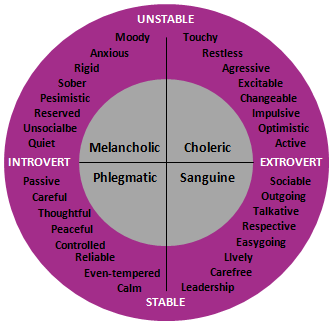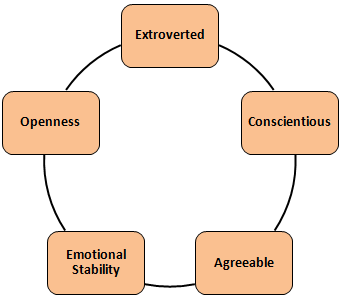Nomothetic Approach to Personality
This section reviews nomothetic approach. It brings together the ideas and perspectives as how personality is understood by trait theorists. It will also briefly touch upon how psychologists predict human behaviour using this approach.
Nomothetic Approach
Nomothetic view also known as ‘trait’ approach’ looks for universal laws of behaviour. Being able to predict behaviour is a mayor aim and outcome of this idea. Psychologists adopting this approach hold that ‘traits’ are source of human personality. A trait is assumed to be any enduring characteristic of an individual that is relatively stable and influence behaviour in a particular direction. Theorists adopting this approach believe that personality is consistent, largely inherited and determined by genetics and biochemistry of our brains. They argue that it is matter of biological functioning, fixed at birth if not before and that environmental factors, life's experiences and social influences have little or nothing to alter it.
Traits as personality determinants
Proponents of nomothetic approach claim that the above provides solid foundation to create instrument measures. Psychologists that see traits as major determinant of human behaviour identify set of traits along which all humans can be classified and compared to. They identify traits that are considered to characterise human personality. They hold that human beings share number of characteristics and that the study of each of these will shed more light on understanding similarities and differences among individuals. This can be demonstrated in the figure below which shows four personality types with trait characteristics.
 |
To construct instrument measures that allow psychologists to develop scales, individual characteristics are grouped into clusters creating types. For example, trait associated with practicality and risks taking are found in extrovert type. The same retrospectively, quiet less sociable character would be associated with introvert type. Hence nomothetic approach involves categorising individuals in order to uncover the common causes of behaviour. Thus it allows psychologists to identify and classify personality according to recognisable characteristics.
Personality dimensions
There are big five key dimensions linked to human behaviour. These describe how people respond to stress, adjust to new environments or determine their interests. They focus to provide insight as how effectively an individual would be able to work with others, set up his goals or establish his identity and role. A research suggests that five basic dimensions underlie all others and encompass most of the significant variation in human personality. See these dimensions in the below model.
 |
The first characteristic is defined as extroversion versus introversion. It measures the extent to which an individual is oriented to the outside world. The second trait refers to conscientiousness, that is, how an individual is organised, dependable or focused. Agreeableness is the third trait identified and measures the degree to which an individual is friendly, reliable or co-operative with others. The fourth trait covers emotional stability which taps on person’s ability to withstand stress. People that are emotionally stable are likely to be calm, secure and self-confident. The fifth dimension addresses openness to experience. Open personalities expose creativity, curiousness as opposed to person at the other end which may find comfort in the familiarity.

